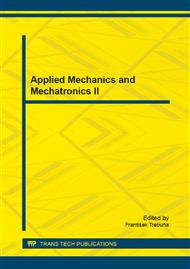p.54
p.63
p.69
p.76
p.88
p.96
p.103
p.108
p.118
Determination of Boundary Conditions and Optimalisation of the Graphite Electrode Cooling Circuit
Abstract:
The present paper describes the determination of boundary conditions of the 10 kVA plasma reactor graphite electrode cooling. The water cooler installed on the lid of the reactor, connected in open circuit, sustains the permissible service temperatures in the analysed area of the reactor. With the monitoring of the coolant flow and temperatures at the inlet and outlet of the cooler, the heat flux necessary for the design of a closed circulation cooling circuit was determined. Software support of HTC-FC (heat transfer coefficient – natural convection) and simulation software ANSYS CFX were used to solve the design and functionality of the proposed solution. This software is designed for the numerical calculation of differential equations describing fluid flow and heat conduction with the use of the finite volume method. With the application of time-dependent boundary conditions in the simulation tool ANSYS CFX, we acquired information about the temperature distribution of the cooling medium during the operation of the described technology and also about the change in the variation of heat flux between the environment and the proposed container.
Info:
Periodical:
Pages:
88-95
Citation:
Online since:
November 2015
Authors:
Keywords:
Price:
Сopyright:
© 2015 Trans Tech Publications Ltd. All Rights Reserved
Share:
Citation:


